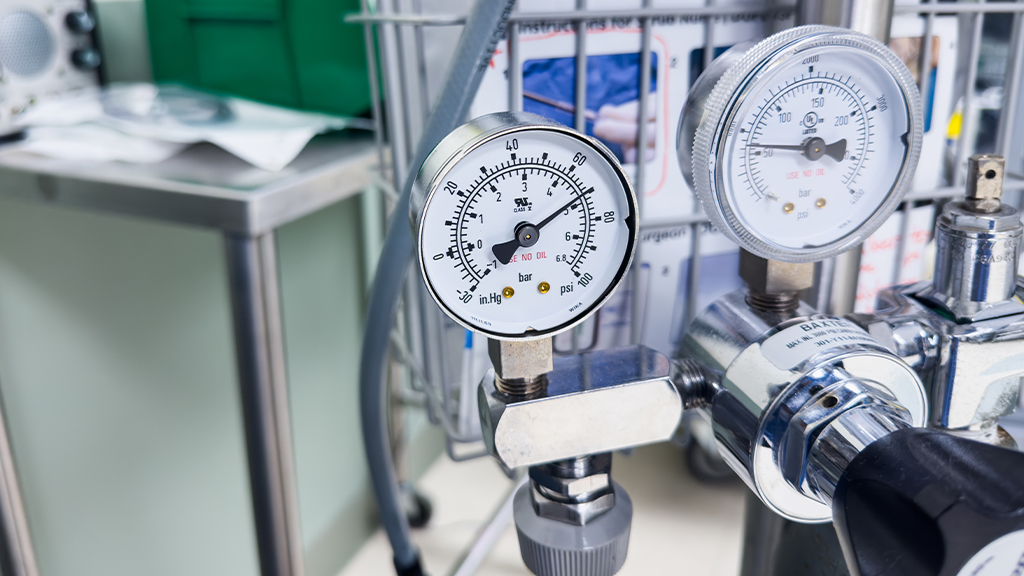Precise pressure calibration is the cornerstone of industrial equipment’s safety and efficiency. From pharmaceutical manufacturing to the oil and gas sectors, it ensures the devices that are essential for their functioning are operating within designed specifications. This is made against a known standard to be ascertained about its accuracy. The intention is clear to ensure that the equipment keeps on performing without failures and safety. The question one may need to ask, therefore, is why accurate calibration pressure holds such high importance and how the current solution deals with the calibration issues in ultra-high-pressure systems.
Pressure Calibration: The Foundation of Equipment Safety
It’s not just a routine check; it’s an essential activity throughout the life cycle of every industrial equipment piece. Calibration ensures that measuring instruments function precisely as intended, reflecting their original manufacturing specifications and suitability for their designated purposes. This process involves multiple stages that employ calibrated instruments to measure and, if necessary, adjust pressure readings on devices.
Advancements have transformed calibration from basic, manually operated gauges to sophisticated automated systems. These systems are intricately customized to cater to various calibration needs. The selection of instruments and calibration methods is contingent upon the level of precision demanded by the specific task at hand.
The Cruciality of Periodic Pressure Calibration
Regular calibration is both a good practice and a must to keep the equipment within the tolerances given by the manufacturer. This is the process for comparing a device under test (DUT) with a known reference standard. Here is why it is important:
- Ensures devices remain accurate: The keeping of accuracy is one of the methods used to ensure the differences in measurements are detected and corrections take place to maintain precision at desirable levels.
- Safety standards upheld: It is a safety issue of the functioning of equipment under high pressure, not of performance.
- Maintains compliance: Most industries are controlled by regulatory standards that require calibration to be documented.
The Challenge of Ultra High Pressure Calibration
Applications involving high pressure, particularly those that are above 1,000 bar, provide particular difficulties. Indeed, conventional calibration instruments are most often not sufficient for these conditions, thus reducing the possibility of making appropriate calibrations. In industries such as automobile manufacturing, where exact control over high pressures is essential for engine testing and safety, this gap presents serious concerns.
The Importance of Regular Calibration Checks
Routine calibration checks are what form the backbone of both operational safety and accuracy for industries reliant on high-pressure equipment. The very nature of these checks is rather simple and yet in a very profound way: they ensure the limit of the equipment’s performance, meaning to assure its accuracy and safety. We are going to see how these checks are anything other than routine maintenance work but paramount practices that safeguard industrial standards and safety.
Ensuring Accuracy and Reliability
Accuracy is the primary goal of routine calibration assessments. The high-pressure equipment that makes part of the essential kit in fields as far-ranging from pharmaceuticals to petroleum will need precision. Routine calibration brings equipment output to known and maintained standards. This is very important because even if this is a deviation of the slightest, it probably follows that large differences would be provided, influencing the quality of products and safety protocols.
Safety: A Non-Negotiable Priority
Safety is one thing that cannot be overemphasized in high-pressure systems. Routine checks of calibration reduce the risks, and hence accidents that would be incurred from the failure of equipment. In the sense of ensuring pressure reading accuracy, it prevents scenarios by which personnel and the environment are exposed to unknowingly unsafe pressure levels.
Cost Efficiency Through Preventive Maintenance
Besides safety, calibration is part of preventive maintenance that can save a lot of money. It identifies and corrects little deviations before they morph into huge problems, avoiding downtime and the costly repair of equipment. The calibration of all manufacturing equipment ensures that the level of performance is maintained, with regular checks to increase efficiency and life span.
Instruments and Techniques Used in High Pressure Calibration
It is indispensable to make the appropriate selection of the tools used for high pressure calibration. The instruments used should either be precise or surpass the precision of the calibrated equipment. This section will look at the special instruments and methods deployed in high-pressure device calibration.
Selecting the Right Calibration Instruments
The other defining factor for effective calibration is the choice of instruments used. In applications of high pressure, what should be used, most of the time includes that accuracy exceeding standardized demands. Examples are high-accuracy pressure controllers and commonly used company reference sensors, which are usually more precise for the tasks at hand.
Advanced Techniques for Enhanced Precision
In recent years, advancements in modern technology have introduced new, advanced techniques that enhance the accuracy of high pressure calibration. Automation and digital instrumentation play a significant role in improving accuracy, consistency, and efficiency. Moreover, these systems have the capability to conduct calibrations more rapidly and with fewer human errors, thereby increasing the reliability of the calibration process as a whole.



